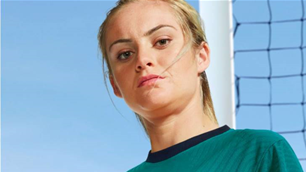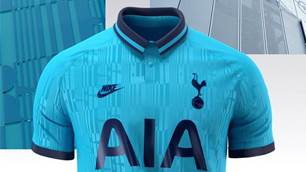HOW does Nike make its boots so grippy, shirts unclingy and footballs so round? FourFourTwo headed to Nike HQ in Portland to find out.
Click here to see all the pictures from the football summit.

It was a tough decision. Either stay in rainy Sydney and cover all the news and gossip from Pim Verbeek’s training camp in the lead up to his first qualifier against Qatar or head off to Nike World Headquarters in Portland, Oregon as their only Australian guest for the Nike Football Innovation Summit.
Listen to Pim slag off the A-League players as not good enough? Go to the States and get to see how they test and make football gear? Hmmmm…
The three day trip was organised to show journalists from around the world the evolution of the Nike football brand, from its first steps in the 1994 World Cup when Nike sponsored eight players in the tournament to the present day where top players everywhere from Melbourne to Manchester lace up their Nike boots and do what they do best: stop goals, create goals and score goals.
We were also allowed access to the highly secretive research lab where apparel and boots are tested and tinkered with until they become the gear you buy in the shops. As we’re told how taking a few ounces of material off the sole of the boot can make all the difference when accelerating, videos of Wayne Rooney striking a football slowed down to 1000 frames per second play on big screens, while rubber moulds of the feet of Ronaldinho, Ronaldo and Van Nistelrooy sit casually, almost forgotten, on shelves.
And at the end of the long day, what better way to find out whether all this science actually works than going out and trying the gear for ourselves, into the cold, rainy single digit temperature Pacific Northwest afternoon for a kick around.
Your kit, aaahh!
Gone are the days when teams played in kits with just two main colours and a badge.
These days football kits are fashion and each new kit design is met with the kind of anticipation usually reserved for the kick-off of a new season.
When you also add in issues of performance, durability and a recognition of the heritage of each team that you are producing kits for, it’s easy to see why some new designs take nearly two and a half years to hit the shelves.
Most national kits go through many incarnations before the final one is decided upon, with national federations signing off on every aspect from length of shorts to style of badge. For Nike, one big challenge is to realise that not all clubs and countries work in the same way.
“The Dutch FA have a very progressive attitude towards their away kits,” says Phil Dickinson, creative director football at Nike. “We worked closely with Marco van Basten on the new kit which uses a nassau blue colour linked closely with the Dutch royal family. We’ve never used this colour on a kit before but we know they’re really happy with the design.”
Other teams aren’t quite so open to change. “Arsenal away kits were always yellow, so when we met with their officials and suggested we change the colour, it made for a very uncomfortable meeting.”
Dickinson also reveals some kit changes can come from the strangest of sources.
“One vice chairman of a club took home the design boards to think about them overnight and returned the next day to tell us he wanted to changed the width of a stripe on the socks based on feedback from a family member the night before.”
Aussie, Aussie, Aussie!
It was a bit surreal to see get my first look at the new Australian kit in an American gym, but such was the cloak-and-dagger secrecy surrounding the new design, it was the only place in the Bo Jackson Building that wouldn’t be subject to prying eyes.
And while the design itself isn’t that different aesthetically – some green piping along the side of the shirt and a lower v-neck collar – most of the changes have come in the technology with a view to keeping our players cooler in the humid Asian conditions.
“In the 2002 World Cup, we developed a kit for Brazil which was super-conceptual and we wanted to use those ideas as a test bed for developing something new in the future,” says Dickinson. “And if you look at the new Australian kit there’s a lot of engineered mesh panels which promote air flow over the body. When we analyse where people sweat the most on their body, it’s generally down the centre of the back so that’s why there’s a new panel there. The shirt allows the players to feel comfortable playing in the heat of Asia all the way to a more temperate climate like the UK.”
As for the kit looking a little similar to the previous design, word from the players and FFA who were consulted on the look was that after the World Cup success, they didn’t want to depart too far from it in the next version, so they could build a football identity for the team through its strip.
But what’s up with the plastic transfer badge again? Without revealing who made the decision for the Aussie kit, Dickinson said that the call on embroidered badges over transfers is often made by the players and governing bodies of the national team.
“If you look at the complexity of the Australian coat of arms, if it was embroidered it would have a high stitch count, therefore compromising the ability of the material to perform,” says Dickinson. “And the preferred option for us is to sell the shirt that the players are wearing. There are exceptions. The Brazil away shirt has a transfer badge on it which the players play in, but the cultural feedback from that region is the fans want an embroidered badge on the shirt for retail. The replica almost feels richer than the real thing.”

It was a tough decision. Either stay in rainy Sydney and cover all the news and gossip from Pim Verbeek’s training camp in the lead up to his first qualifier against Qatar or head off to Nike World Headquarters in Portland, Oregon as their only Australian guest for the Nike Football Innovation Summit.
Listen to Pim slag off the A-League players as not good enough? Go to the States and get to see how they test and make football gear? Hmmmm…
The three day trip was organised to show journalists from around the world the evolution of the Nike football brand, from its first steps in the 1994 World Cup when Nike sponsored eight players in the tournament to the present day where top players everywhere from Melbourne to Manchester lace up their Nike boots and do what they do best: stop goals, create goals and score goals.
We were also allowed access to the highly secretive research lab where apparel and boots are tested and tinkered with until they become the gear you buy in the shops. As we’re told how taking a few ounces of material off the sole of the boot can make all the difference when accelerating, videos of Wayne Rooney striking a football slowed down to 1000 frames per second play on big screens, while rubber moulds of the feet of Ronaldinho, Ronaldo and Van Nistelrooy sit casually, almost forgotten, on shelves.
And at the end of the long day, what better way to find out whether all this science actually works than going out and trying the gear for ourselves, into the cold, rainy single digit temperature Pacific Northwest afternoon for a kick around.
Your kit, aaahh!
Gone are the days when teams played in kits with just two main colours and a badge.
These days football kits are fashion and each new kit design is met with the kind of anticipation usually reserved for the kick-off of a new season.
When you also add in issues of performance, durability and a recognition of the heritage of each team that you are producing kits for, it’s easy to see why some new designs take nearly two and a half years to hit the shelves.
Most national kits go through many incarnations before the final one is decided upon, with national federations signing off on every aspect from length of shorts to style of badge. For Nike, one big challenge is to realise that not all clubs and countries work in the same way.
“The Dutch FA have a very progressive attitude towards their away kits,” says Phil Dickinson, creative director football at Nike. “We worked closely with Marco van Basten on the new kit which uses a nassau blue colour linked closely with the Dutch royal family. We’ve never used this colour on a kit before but we know they’re really happy with the design.”
Other teams aren’t quite so open to change. “Arsenal away kits were always yellow, so when we met with their officials and suggested we change the colour, it made for a very uncomfortable meeting.”
Dickinson also reveals some kit changes can come from the strangest of sources.
“One vice chairman of a club took home the design boards to think about them overnight and returned the next day to tell us he wanted to changed the width of a stripe on the socks based on feedback from a family member the night before.”
Aussie, Aussie, Aussie!
It was a bit surreal to see get my first look at the new Australian kit in an American gym, but such was the cloak-and-dagger secrecy surrounding the new design, it was the only place in the Bo Jackson Building that wouldn’t be subject to prying eyes.
And while the design itself isn’t that different aesthetically – some green piping along the side of the shirt and a lower v-neck collar – most of the changes have come in the technology with a view to keeping our players cooler in the humid Asian conditions.
“In the 2002 World Cup, we developed a kit for Brazil which was super-conceptual and we wanted to use those ideas as a test bed for developing something new in the future,” says Dickinson. “And if you look at the new Australian kit there’s a lot of engineered mesh panels which promote air flow over the body. When we analyse where people sweat the most on their body, it’s generally down the centre of the back so that’s why there’s a new panel there. The shirt allows the players to feel comfortable playing in the heat of Asia all the way to a more temperate climate like the UK.”
As for the kit looking a little similar to the previous design, word from the players and FFA who were consulted on the look was that after the World Cup success, they didn’t want to depart too far from it in the next version, so they could build a football identity for the team through its strip.
But what’s up with the plastic transfer badge again? Without revealing who made the decision for the Aussie kit, Dickinson said that the call on embroidered badges over transfers is often made by the players and governing bodies of the national team.
“If you look at the complexity of the Australian coat of arms, if it was embroidered it would have a high stitch count, therefore compromising the ability of the material to perform,” says Dickinson. “And the preferred option for us is to sell the shirt that the players are wearing. There are exceptions. The Brazil away shirt has a transfer badge on it which the players play in, but the cultural feedback from that region is the fans want an embroidered badge on the shirt for retail. The replica almost feels richer than the real thing.”
Related Articles

FFA 'consulting with Nike' on Matildas kit backflip

After eight years, Wanderers swap Nike for Kappa













